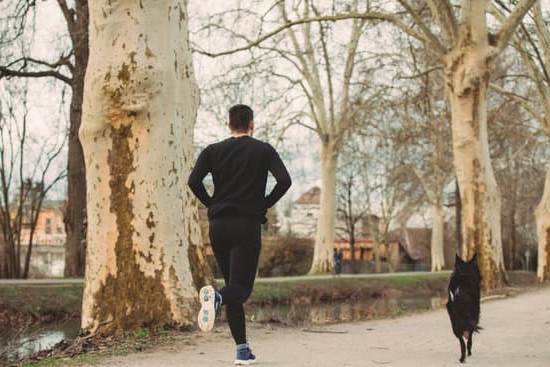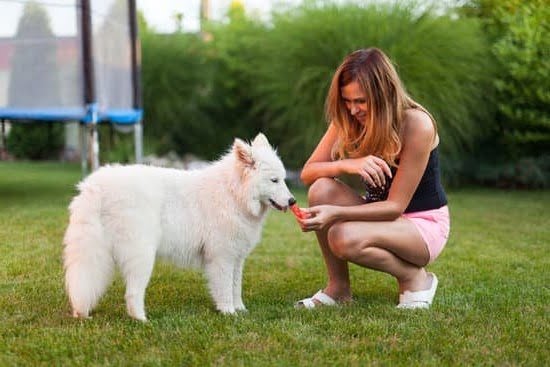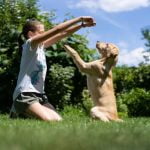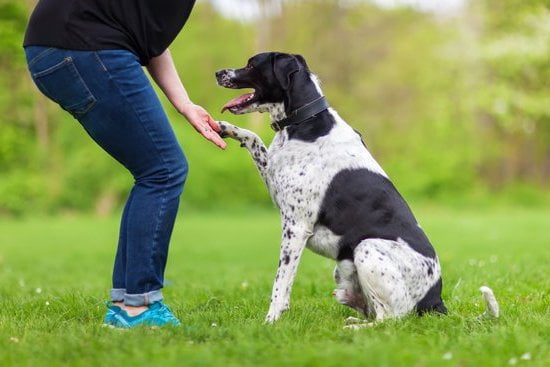Training a dog to pee in one place is a fundamental aspect of ensuring hygiene and maintaining a clean living environment. Consistent potty training not only helps in managing your pet’s bathroom habits but also strengthens the bond between you and your furry companion.
Understanding your dog’s behavior and establishing a routine are crucial components to successfully teach them where to relieve themselves. By following the right techniques, you can train your dog to pee in one designated spot, making your life easier and their experience more structured.
Potty training is not just about convenience; it is about fostering good habits that will benefit both you and your dog in the long run. Dogs thrive on routine, so providing consistency in their daily schedule can help them understand where they should go to pee.
Selecting the right spot for your dog’s bathroom needs requires careful consideration of factors such as accessibility, privacy, and ease of cleaning. By creating a designated pee area that meets these criteria, you set the stage for successful potty training.
Establishing a routine is key to effectively train your dog to pee in one place. Consistency in feeding times, walks, and potty breaks helps your furry friend develop a sense of predictability and stability. Positive reinforcement techniques play a vital role in encouraging desired behavior – rewarding your dog with treats or praise when they pee in the designated spot reinforces this action.
While setbacks may occur during the training process, patience and perseverance are essential in overcoming challenges and achieving long-term success with potty training. Through gradual transition from indoor potty pads to an outdoor pee spot, you can reinforce the habit of peeing in one specific location consistently over time.
Understanding Your Dog’s Behavior
When it comes to training your dog to pee in one place, understanding your furry friend’s behavior is crucial. Dogs thrive on routine and structure, making consistency the key to successful potty training. By recognizing patterns in your dog’s behavior, such as timing and signals when they need to relieve themselves, you can effectively establish a routine that works for both you and your pet.
One way to start is by taking note of the times when your dog typically needs to go potty. Whether it’s first thing in the morning, after meals, or before bedtime, creating a schedule based on these patterns can help regulate their bathroom habits.
Additionally, paying attention to any behaviors like circling or sniffing around can signal that your dog needs to go out. By being attuned to these cues and acting proactively, you can guide your pet towards peeing in the designated spot consistently.
To reinforce this routine, make sure to take your dog out to the designated pee area at regular intervals throughout the day. Consistency is key in establishing this behavior, so praise and reward them every time they successfully use the spot.
Positive reinforcement techniques like treats or verbal cues can help reinforce the desired behavior and motivate your dog to continue peeing in one place. With patience and dedication, you can effectively train your dog to develop good potty habits while strengthening the bond between you and your canine companion.
| Aspect of Training | Importance |
|---|---|
| Routine | Crucial for successful potty training |
| Recognition of behavior patterns | Key in establishing a consistent schedule |
| Positive reinforcement | Motivates dogs to continue using the designated spot |
Choosing the Right Spot
Training your dog to pee in one place starts with choosing the right spot for their designated pee area. This step is crucial in establishing a routine and ensuring successful potty training. When deciding on the perfect location, there are several factors to consider to set your furry friend up for success:
- Accessibility: Choose a spot that is easily accessible for your dog, especially during the initial stages of training when they need to go frequently. This will prevent accidents from occurring inside the house.
- Privacy: Dogs, like humans, appreciate privacy when doing their business. Select an area that is quiet and secluded to make them feel comfortable and secure while peeing.
- Distance from Living Area: Keep the designated pee spot away from where you and your family spend most of your time. This will help establish boundaries and prevent accidents in high-traffic areas of your home.
By taking these factors into consideration, you can create an ideal environment for your dog to learn how to pee in one place effectively. Remember that consistency is key in potty training, so choose a designated spot that meets these criteria and stick to it.
- Size of Space: Ensure the designated pee area is large enough for your dog to move around comfortably. This will allow them to find their preferred spot within the area without feeling confined or restricted.
- Cleanliness: Keep the chosen spot clean and free of any lingering scents that may attract your dog to other areas. Regularly clean up after they have gone potty to maintain a pleasant environment for them.
- Outdoor vs. Indoor: Depending on whether you are training your dog to go outside or on indoor pads, adjust the location accordingly. For outdoor training, choose an area in your yard that meets the above criteria. If using indoor pads, place them in a convenient but designated location inside your home.
By carefully considering these factors when choosing the right spot for your dog’s designated pee area and following through with consistent training, you can successfully teach them how to pee in one place efficiently and establish a lasting potty routine within your home.
Establishing a Routine
To establish a routine for potty training your dog, consider the following tips:
- Set specific times for potty breaks: Dogs thrive on routine, so make sure to take them out at consistent times throughout the day, such as first thing in the morning, after meals, and before bedtime.
- Use verbal cues: When taking your dog to their designated pee spot, use a specific command or cue that indicates it’s time to go potty. This will help them associate the command with the action.
- Monitor their water intake: Be mindful of when your dog drinks water and adjust their potty break schedule accordingly. Avoid giving them access to water too close to bedtime to prevent accidents during the night.
Training your dog to pee in one place requires patience and dedication, but by establishing a consistent routine, you’ll set both yourself and your furry friend up for success.
Remember that every dog is different, so it’s important to be flexible and adapt the routine based on your pet’s individual needs. With time and practice, your dog will learn where they are supposed to go potty, making life easier for you both in the long run.
Positive Reinforcement Techniques
When it comes to training your dog to pee in one place, positive reinforcement techniques can be highly effective. Dogs respond well to rewards and praise, making them more likely to repeat desired behaviors. The key is to reward your furry friend immediately after they successfully pee in the designated spot.
This could be a treat, a pat on the head, or verbal praise. Consistency is crucial in reinforcing the behavior, so make sure to reward your dog every time they use the designated pee area.
Another effective positive reinforcement technique is using a clicker. Clicker training involves using a small device that emits a clicking sound followed by a treat or reward. You can begin by clicking the device when your dog pees in the designated spot and then giving them a treat right after. Over time, your dog will associate the click with the reward and understand that peeing in that specific spot leads to praise and treats.
In addition to treats and clicker training, you can also use playtime as a form of positive reinforcement. After your dog successfully pees in the designated spot, engage in their favorite game or activity as a reward. This will not only reinforce the desired behavior but also strengthen the bond between you and your furry companion. Remember, patience is key when implementing positive reinforcement techniques into your potty training routine.
| Positive Reinforcement Technique | Effectiveness |
|---|---|
| Rewarding with treats | Highly effective for training dogs |
| Clicker training | Helps dogs understand desired behaviors quickly |
| Using playtime as a reward | Strengthens bond between owner and dog |
Dealing With Accidents
Accidents Happen: Understanding the Nature of Setbacks
Even with the best efforts and most consistent training routines, accidents are bound to happen during the potty training process. It is crucial for dog owners to remember that setbacks are a normal part of training and should not be seen as a failure on either the part of the dog or the owner.
Dogs, like humans, may have occasional slip-ups or difficulties in adjusting to the new routine. Understanding this can help owners approach accidents with patience and a positive mindset.
Immediate Response: What to Do When Accidents Occur
When accidents do occur, it’s essential to respond promptly and appropriately. One key strategy is not to punish your dog for accidents but instead redirect their attention to the designated pee area. Clean up any mess thoroughly using an enzyme-based cleaner to eliminate odors that might attract your dog back to that spot. Avoid using harsh chemicals that may contain ammonia, as this scent can actually encourage dogs to pee in the same spot again.
Reinforce Good Behavior: Using Positive Reinforcement After Accidents
After an accident has been cleaned up, it’s important to positively reinforce your dog when they successfully pee in the designated spot. You can offer verbal praise, treats, or even playtime as rewards for good behavior.
By associating positive experiences with peeing in the appropriate place, you are reinforcing your dog’s understanding of where they should go. Through consistency and patience, you can help your furry friend learn how to train a dog to pee in one place effectively.
Gradual Transition
Transitioning From Indoor to Outdoor
When it comes to training your dog to pee in one place, a crucial step is transitioning from using indoor potty training pads to an outdoor pee spot. This transition helps your furry friend understand where they should consistently relieve themselves, whether indoors or outdoors. Start by gradually moving the potty training pads closer to the desired outdoor pee spot, so your dog begins associating that area with their bathroom needs.
Introduce Outdoor Pee Spot
To smoothly transition your dog from using indoor pads to an outdoor pee spot, introduce them to the designated area outside. Make sure this spot is easily accessible and comfortable for your pet. Use cues like verbal commands or treats to lead your dog to the outdoor pee spot after removing the indoor potty training pad. Encourage and praise them when they successfully use the outdoor spot for peeing.
Consistency in Training
Consistency is key throughout this transition period. Maintain a strict routine for taking your dog out to the chosen outdoor pee spot at regular intervals, especially after meals or playtime. Keep an eye on their behavior and body language as signs that they need to go.
Remember, positive reinforcement is still essential during this stage of training, so don’t forget to reward and praise your pup when they use the outdoor spot correctly. With patience and dedication, your dog will eventually learn how to pee in one place both indoors and outdoors without any confusion.
Consistency Is Key
Consistency is crucial when it comes to training your dog to pee in one designated spot. By maintaining a regular schedule and reinforcing positive behavior consistently, you can help ensure long-term success in your potty training efforts. Dogs thrive on routine, so it’s important to stick to a set schedule for feeding times, bathroom breaks, and playtime to establish a sense of predictability for your furry friend.
By consistently using the same cue word or phrase, you can help reinforce the connection between the action of peeing and the location where it should occur. Over time, your dog will learn to associate that specific spot with the act of going potty.
In addition to using a cue word, providing consistent praise and rewards for using the designated pee area is essential. Whether it’s offering verbal praise, giving treats, or even engaging in playtime after your dog pees in the right spot, positive reinforcement helps solidify good behavior. Remember to be patient and understanding during the training process – accidents may happen, but with perseverance and consistency, you can help your dog develop the habit of peeing in one place reliably.
Troubleshooting
Potty training a dog to pee in one place can sometimes present challenges along the way. One common issue that pet owners may encounter is inconsistency in their dog’s behavior. This inconsistency could be due to various factors such as changes in routine, environment, or even health issues.
To overcome this challenge, it is essential to reevaluate the potty training process and ensure that the designated pee spot is easily accessible and appealing to your furry friend. Consistency in routine and positive reinforcement are key elements in addressing this challenge.
Another common challenge in potty training is dealing with accidents that may occur despite efforts to train your dog effectively. Accidents are a natural part of the learning process for dogs, especially during the initial stages of potty training. It is important not to scold or punish your pet for accidents, as this could create fear and confusion.
Instead, focus on reinforcing good behavior by rewarding your dog when they pee in the designated spot. Providing clear guidance and patience will help your dog understand where they should be doing their business.
Additionally, some dogs may resist transitioning from indoor potty training pads to an outdoor pee spot. This can be a challenging adjustment for dogs who have grown accustomed to using indoor pads or other designated areas inside the house. To overcome this challenge, gradually move the indoor pads closer to the outdoor spot and reward your dog each time they successfully use the outdoor area.
Patience, consistency, and positive reinforcement techniques will help make this transition smoother for your furry companion. Remember that each dog is unique, so it may take time and patience to successfully train them to pee in one designated spot consistently.
Conclusion
In conclusion, training your dog to pee in one designated spot not only contributes to a cleaner living environment but also fosters a strong bond between you and your furry friend. By following a consistent routine, understanding your dog’s behavior, and providing positive reinforcement, you can successfully teach your dog where to do their business. While setbacks may occur during the training process, it is essential to remain patient and address accidents calmly.
Remember that establishing a routine is the key to successful potty training. By choosing the right spot for your dog to pee and being diligent in reinforcing good behavior, you can effectively train them to use one designated area. As you progress from indoor potty training pads to an outdoor pee spot, maintain consistency in your approach and celebrate small victories along the way.
Ultimately, the benefits of training your dog to pee in one place extend beyond just convenience. It nurtures discipline in your pet, strengthens the human-animal bond, and creates a harmonious living space for both you and your furry companion. So invest time and effort into implementing these techniques on how to train a dog to pee in one place – it will lead to long-term success and a happier relationship with your four-legged friend.
Frequently Asked Questions
How Do I Get My Dog to Pee in a Certain Spot?
Training your dog to pee in a certain spot requires consistency and positive reinforcement. Start by taking your dog to the chosen spot frequently, especially after meals or naps. When your dog pees in that spot, praise and reward them.
How Long Does It Take to Train a Dog to Pee in One Spot?
The time it takes to train a dog to pee in one spot varies depending on the dog’s age, breed, and past habits. Generally, it can take anywhere from a few days to a few weeks for a dog to consistently pee in the designated area.
How Do I Train My Dog to Pee in a Certain Area of the Yard?
To train your dog to pee in a specific area of the yard, use the same principles as training them to go in a particular spot. Take them to that area frequently, especially before bedtime and after meals. Reward them with treats and praise when they go there successfully.

Welcome to the blog! I am a professional dog trainer and have been working with dogs for many years. In this blog, I will be discussing various topics related to dog training, including tips, tricks, and advice. I hope you find this information helpful and informative. Thanks for reading!





